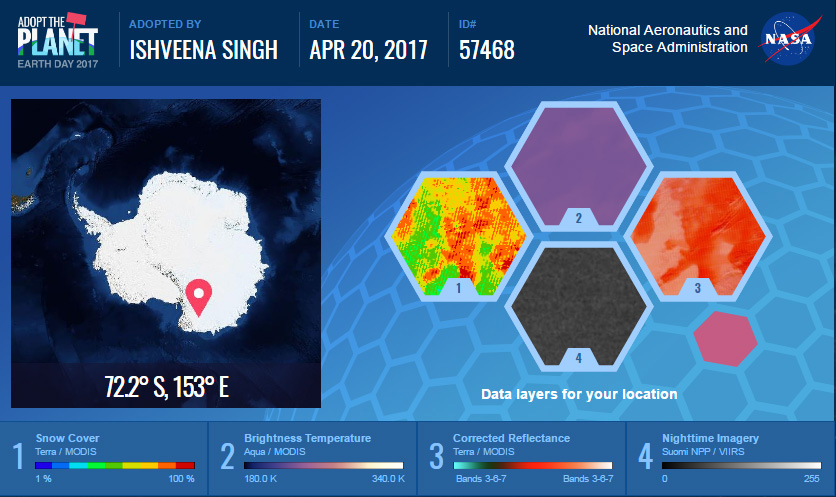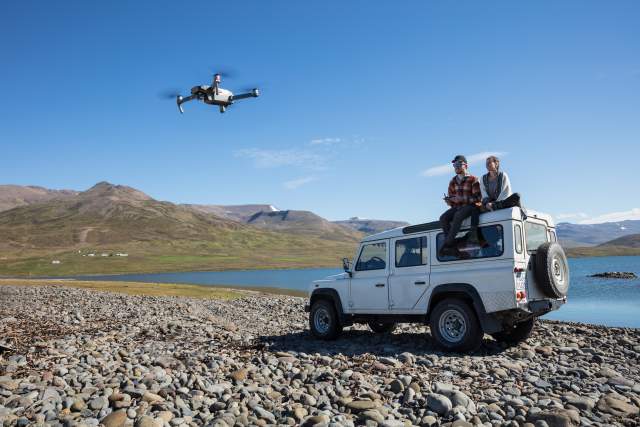
The Earth is up for adoption; claim your stake from NASA!
NASA enjoys a vantage point over this great blue orb we call home like none other. Its fleet of earth observation satellites and air- and ground-based sensors keep a track of everything from the vast oceans and the mountains to the air we breathe. The space agency knows exactly how badly we are screwing up the planet on a daily basis. Perhaps that’s why it has resorted to a unique way to make people understand the global environment better.
NASA has put the Earth up for adoption.
Yep, that’s right. Up to 64,000 individual pieces of the planet, each approximately 55 miles wide, are up for grabs. Once you adopt a slice of Earth, you will receive a personalized adoption certificate from NASA featuring the unique number and coordinates of your patch of land (or in my case, ice).
The certificate will also show the earth science data NASA has captured for that location, along with the names of the satellites/instruments used in the data collection. As a bonus, a link would take you to NASA’s Worldview website where this data actually comes to life. You will be able to observe how your patch of turf has changed over the last 30 years. After you are done, hop over to your hometown or your favorite vacay spot to see how the green cover or the air quality of that place has altered over the years.
This initiative, a part of the upcoming Earth Day celebrations planned by NASA, may be purely symbolic in nature, but it drives home the point that the third rock from the sun is in dire need of a responsible custodian. 2.3 million km² of forest land vanished between 2000 and 2012. Global warming has reached unprecedented levels. The Arctic sea ice is vanishing at a chilling rate. And yet, almost 40 percent of the world’s adult population is still unaware of climate change, according to a study.
So, if this virtual adoption drive by NASA gets earth dwellers to think a little about the climate, we are all for it. Want to participate? Sign up here.
By the way, Huffington Post got in touch with NASA to verify that no aliens would be able to adopt our precious Earth. To which NASA Earth Science Communications’ Stephen E. Cole said, “We’ll cross the bridge to opening this up to extraterrestrials (with good internet connections) down the road once some of our projects searching for life in the cosmos bear fruit.” 😉










